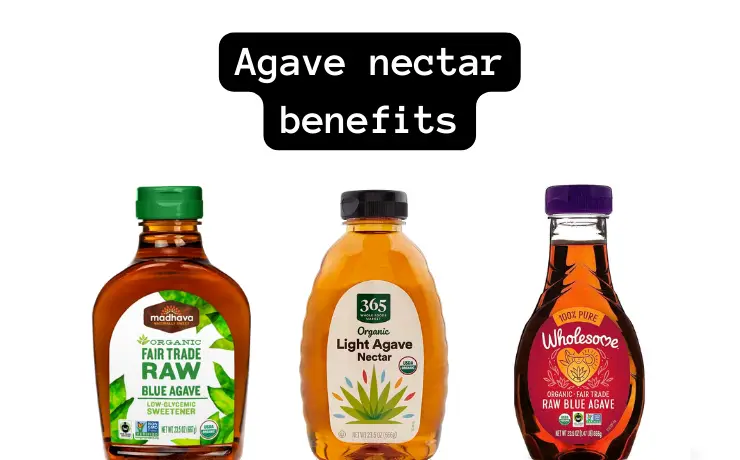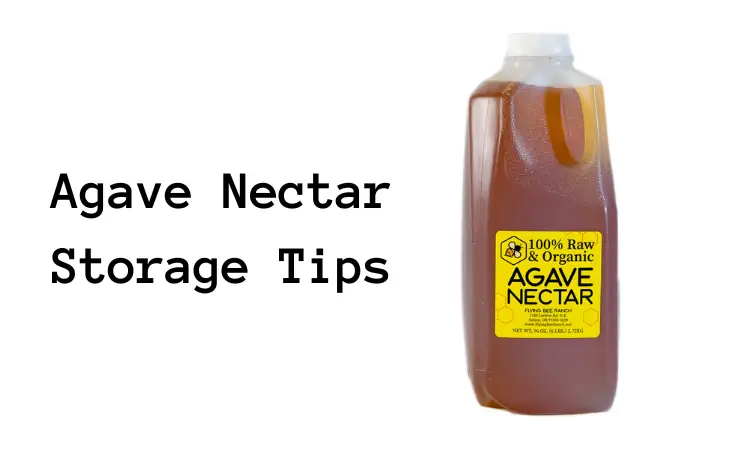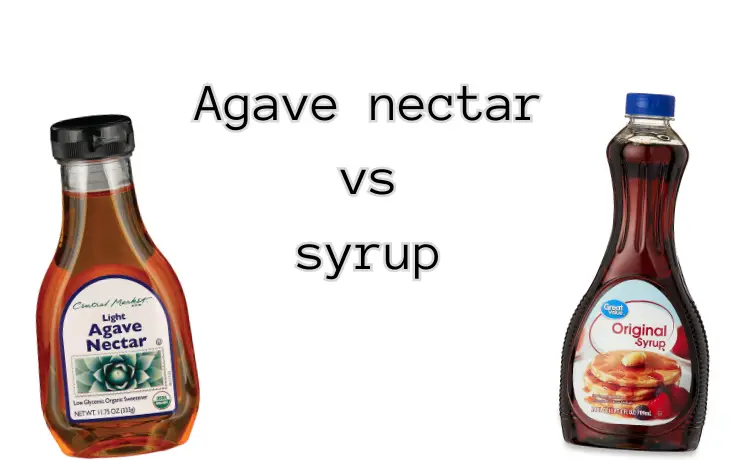Does agave nectar go bad? Oh, sweet reader, you’ve just tapped into a nectarous realm of curiosity! Delve into the sugary world of agave’s shelf life, and you’ll uncover the secrets of its lasting charm.
SEE OFFER 👉🏻best agave nectars
From whispers of how to perfectly store this golden elixir to decoding the mysterious signs when it’s lost its delectable mojo, we’ll embark on a journey that flirts with health implications and sashays through the dance of taste evolution. So, drizzle up, for we’re about to spill the tea – or should we say the syrup?
Does agave nectar go bad?
Yes, agave nectar can go bad. Over time, exposure to moisture or contaminants can lead to spoilage. Store it in a cool, dry place and check for changes in color, consistency, or smell. If any of these are off, it’s best to discard the nectar.
Improper storage, such as leaving the cap off, can accelerate the spoilage process. Crystallization might occur over time, but this doesn’t necessarily mean the nectar has gone bad; warming it can return it to its liquid state.
Replace your agave stocks 👉🏻 organic raw agave nectar

Does agave nectar have a shelf life?
Yes, agave nectar does have a shelf life, but it is known for its long-lasting quality when stored properly. Typically, agave nectar comes with a “best before” or “use by” date on the packaging, which is a good guideline to follow.
Agave nectar shelf life can be extended due to some things to consider. When stored in a cool, dry place and kept in a sealed container, agave nectar can remain good for an extended period, often well beyond its labeled date. Proper storage helps prevent moisture and contaminants from affecting its quality.
Over time, agave nectar may undergo changes in color or texture, and it could become crystallized. However, these changes usually do not indicate spoilage or safety concerns. If the nectar develops an off odor or unusual appearance, it’s best to discard it. Otherwise, you can often use agave nectar even after the “best before” date as long as it has been stored correctly and still appears and smells normal.
Agave syrup shelf life
Agave syrup, also known as agave nectar, has a long shelf life when stored properly. Typically, it can last for several years beyond its “best before” or “use by” date if stored in optimal conditions.

What to do with agave syrup?
Agave syrup, also known as agave nectar, is a versatile sweetener that can be used in a variety of ways. Here are some ideas:
- Sweetener for Beverages: Use it to sweeten teas, coffees, cocktails, smoothies, and lemonades.
- Baking and Desserts: Substitute it for sugar or honey in recipes. It’s particularly good in cakes, cookies, and pancakes.
- Drizzle: Pour over pancakes, waffles, or oatmeal for added sweetness.
- Salad Dressings: Mix with vinegar, oil, and seasonings for a sweet twist on dressings.
- Sauces and Marinades: Add to barbecue sauces, teriyaki sauces, or marinades to impart a mild sweetness.
- Granola: Use as a binder and sweetener when making homemade granola.
- Yogurt or Ice Cream Topping: Drizzle over your favorite desserts for an extra touch of sweetness.
- Energy Boost: Since it’s a natural sweetener, it can be consumed before workouts for a quick source of energy.
- Sweetening Homemade Jams: Can be used as an alternative to sugar.
- Vegan Recipes: A great sweetening option for vegans as it’s plant-based and can replace honey.
Remember, like all sweeteners, it’s best to use agave syrup in moderation. It’s sweeter than regular sugar, so you’ll likely need less of it to achieve the desired sweetness.
Agave nectar benefits
Agave nectar offers several potential benefits. It has a lower glycemic index compared to many other sweeteners, which may help regulate blood sugar levels.
It serves as a natural alternative to artificial sweeteners and is vegan-friendly. With its primarily fructose-based sweetness, it can be used in moderation to reduce sugar consumption.
Additionally, agave nectar’s neutral flavor and easy solubility make it a versatile choice for sweetening various foods and beverages. However, it should still be used in moderation due to its high fructose content and individual dietary considerations should be taken into account.

Agave Nectar Spoilage Facts
Agave nectar, like many other food products, can undergo spoilage under certain conditions. Here are some key facts regarding the spoilage of agave nectar:
- Moisture and Contamination: Exposure to moisture and contaminants can lead to spoilage. It’s crucial to keep the container tightly sealed to prevent the entry of water or foreign substances.
- Changes in Appearance: While agave nectar can change in color or texture over time, these changes do not necessarily indicate spoilage. It may become cloudy or crystallized, which is a natural process and not a sign of safety concerns.
- Odor and Taste: If agave nectar develops an off or sour odor or if it has an unusual taste, it may have spoiled and should be discarded.
- Proper Storage: Storing agave nectar in a cool, dry place away from direct sunlight and heat sources helps extend its shelf life. Refrigeration is not necessary but can slow down crystallization.
- Shelf Life: Agave nectar typically has a long shelf life, often lasting well beyond its labeled “best before” or “use by” date if stored correctly. However, it’s best to follow the manufacturer’s recommendations for optimal quality.
In summary, agave nectar can spoil if exposed to moisture or contaminants, but changes in color or texture are typically not indicative of spoilage. Proper storage and regular sensory checks for odor and taste can help ensure its quality and safety.
Agave Nectar Storage Tips
To preserve the quality and extend the shelf life of agave nectar, consider the following storage tips:
- Cool and Dry Location: Store agave nectar in a cool, dry place, away from direct sunlight and heat sources.
- Seal Tightly: Ensure the container is tightly sealed after each use to prevent moisture from entering and contaminants from getting in.
- Use Clean Utensils: When using agave nectar, use clean and dry utensils to avoid introducing foreign substances that may lead to spoilage.
- Avoid Cross-Contamination: Don’t allow other food items or liquids to come into contact with the agave nectar, as this can introduce contaminants.
- Refrigeration (Optional): While not necessary, refrigeration can help slow down crystallization, especially if you live in a very warm or humid environment. If you choose to refrigerate, ensure the container is well-sealed to prevent absorption of odors from the fridge.
- Regular Inspection: Periodically check the agave nectar for any changes in odor, flavor, or appearance. If it develops an unusual smell, or taste, or looks different from normal (aside from crystallization, which is natural), it may have spoiled and should be discarded.
By following these storage tips, you can help maintain the quality and safety of your agave nectar for an extended period.

Agave nectar vs syrup
Agave nectar and agave syrup though often used interchangeably, have subtle differences. Agave nectar is less processed and boasts a milder, neutral flavor and a lighter color.
In contrast, agave syrup undergoes more extensive processing, resulting in a slightly stronger taste with hints of caramel or butterscotch, and it may have a darker hue.
Both serve as versatile sweeteners with a lower glycemic index, but the choice between them often boils down to personal taste and recipe requirements, as agave nectar’s mildness complements various dishes, while agave syrup’s distinct flavor adds caramel-like sweetness to specific recipes.
Always check product labels for additives and processing details to make the right selection.

Agave syrup vs maple syrup
A brief comparison of agave syrup and maple syrup. You can learn more information about maple syrup from here as well.
| Characteristic | Agave Syrup | Maple Syrup |
|---|---|---|
| Source | Extracted from the sap of the agave plant, primarily in Mexico | Tapped from sugar maple trees, mainly in North America |
| Flavor Profile | Mild, neutral sweetness with hints of light honey or caramel | Distinct, robust flavor with rich, earthy, and sometimes smoky notes; flavor intensity varies with grade |
| Color | Light amber or golden | Various grades from light golden to dark amber, indicating flavor intensity |
| Production Process | Involves heating and enzymatic conversion of agave juice | Requires tapping trees, collecting sap, and boiling to concentrate sugars |
| Glycemic Index (GI) | Generally lower GI, suitable for those monitoring blood sugar | Relatively low GI, varies slightly depending on grade |
| Versatility | Versatile in a wide range of recipes, including beverages, baked goods, and dressings | Popular as a topping for breakfast dishes and used in desserts and savory recipes |
| Nutritional Content | Primarily sugars with minimal vitamins and minerals | Contains small amounts of calcium, potassium, and antioxidants |
Please note that both syrups are sweeteners but offer distinct flavors and are used differently in cooking and baking. The choice between them depends on personal taste preferences and culinary requirements.
You can also check out our article on does maple syrup goes bad.
Comparison with Other Sweeteners
Agave nectar stands out among sweeteners for its unique characteristics, but it shares the stage with a variety of other options.
- Glucose syrup is prized for its thickening and moisture-retaining properties in baking.
- Pumpkin syrup brings a seasonal twist with its rich, earthy flavor, perfect for fall-inspired recipes.
- Pancake syrup, with its classic sugary taste, is a breakfast staple.
- Meanwhile, Torani syrups offer an array of flavored options, elevating coffee and cocktails. Each sweetener has its distinct attributes.
- Agave nectar maintains an advantage with its lower glycemic index and versatile, mild taste.
- While maple syrup offers a robust flavor, honey boasts natural antioxidants, and stevia provides calorie-free sweetness.
- Elderberry syrup is a natural remedy celebrated for its potential immune-boosting properties, often used during cold and flu seasons.
- In contrast, triple sec syrup is a vibrant and citrusy liqueur syrup, adding a zesty and sweet kick to a wide array of cocktails and desserts.
The choice ultimately hinges on personal taste preferences, dietary considerations, and the specific demands of your culinary creations.
Frequently Asked Questions About Does Agave Nectar Go Bad
Here are top asked questions and answers about agave nectar and syrups.
What is the shelf life of agave nectar?
Agave nectar typically has a long shelf life, often lasting well beyond its labeled “best before” or “use by” date if stored correctly. Proper storage in a cool, dry place is key to maintaining its quality.
Can I use agave nectar after the expiration date?
Yes, you can often use agave nectar even after the labeled date as long as it has been stored correctly and still looks, smells, and tastes normal. Examine it for any unusual changes before use.
Does agave nectar spoil?
Yes, agave nectar can spoil if exposed to moisture or contaminants. Proper storage in a cool, dry place is essential to prevent spoilage.
Does agave nectar crystallize?
Yes, agave nectar can crystallize over time, forming solid sugar particles. This process is natural and does not indicate spoilage. To return crystallized agave nectar to its liquid state, gently heat the container by placing it in warm water or microwaving it in short intervals, stirring in between until the crystals dissolve. Avoid overheating, as excessive heat can alter the flavor and consistency.
Do you refrigerate agave syrup?
Refrigeration of agave syrup is optional but not necessary. Storing it in a cool, dry place away from direct sunlight and heat sources is typically sufficient for maintaining its quality. However, refrigeration can help slow down the crystallization process, especially in warmer or humid environments.
Does organic blue agave expire?
Yes, organic blue agave can expire, but it has a long shelf life if stored properly. It’s important to check the “best before” or “use by” date on the packaging and follow proper storage guidelines. If stored in a cool, dry place and still looks, smells, and tastes normal, it can often be used beyond the labeled date.

